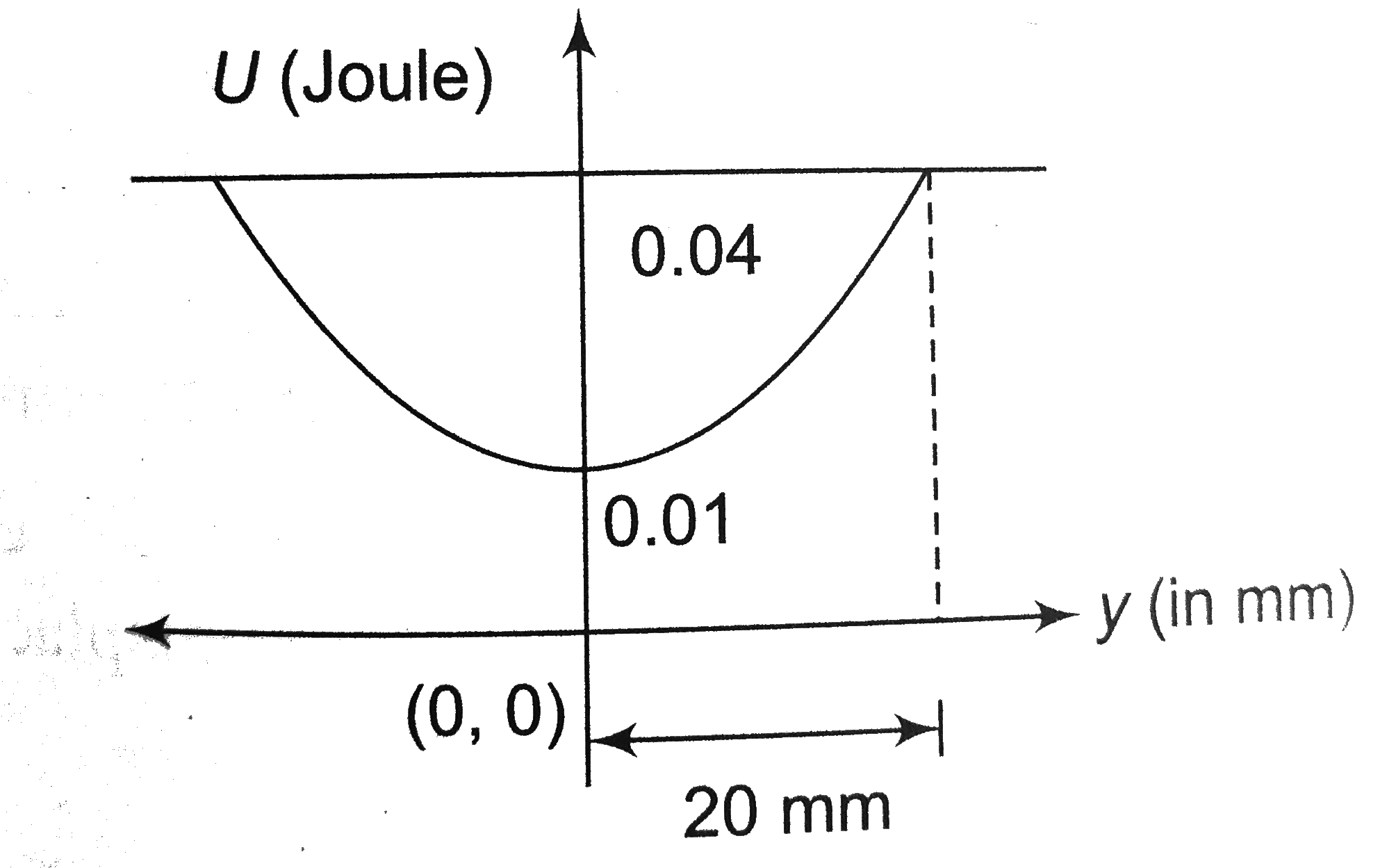Complete Solutions to Velocity , Acceleration And Energy Of Simple Harmonic Motion of chapter OSCILLATION AND SIMPLE HARMONIC MOTION of Class 11 book with complete answers and questions
| Class 11 | PHYSICS |
| Chapter | OSCILLATION AND SIMPLE HARMONIC MOTION |
| A2Z | Velocity , Acceleration And Energy Of Simple Harmonic Motion |
| Number Of Questions | 40 |
| Academic Year | 2023-24 |
A body is performing simple harmonic motion with amplitude A and time period `T` variation of its acceleration `(f)` with time`(t)` is shown in figure If a line `x` velocity of the body is `x` which of the following graph is correct?
 02:03View Solution
02:03View SolutionThe maximum acceleration of a particle in `SHM` is motion two lines keeping the maximum speed in the constant it is position when
02:51View SolutionA particle is `SHM` is discribed by the displacement function `x(t) = a cos (Delta omega + theta)` If the initial `(t = 0)` position of the particle `1cm` and its initial velocity is `picm//s` The angular frequency of the particle is `pi rad//s`, then its amplitude is
02:45View SolutionTwo particles `P` and `Q` describe simple harmonic motions of same period , same amplitude along the same line about the same equilibrium position `O`. When `P` and `Q` are on opposite sides of `O` at the same distance from `O` they have the same speed of `1.2m//s` in the same direction, when their displacements are the same they have the same speed of `1.6m//s` in opposite directions .The maximum velocity in `m//s` of either particle is
04:17View SolutionA particle executes simple harmonic motion with an amplitude of `4cm` At the mean position the velocity of tge particle is `10` earth distance of the particle from the mean position when its speed `5` point is
01:57View SolutionA particle is executing SHM according to the equation `x = A cos omega t`. Average speed of the particle during the interval `0 le t le (pi)/(6omega)` is
02:08View SolutionThe `KE` and `PE` , of a particle executing `SHM` amplitude `A` will be equal when its displacement is
03:12View SolutionA verticle mass-spring system executed simple harmonic oscillation with a period `2 s` quantity of this system which simple varation with a period of `1sec` are
07:12View SolutionA body executes simple harmonic motion. The potential energy (P.E), the kinetic energy (K.E) and energy (T.E) are measured as a function of displacement `x`. Which of the following staements is true?
01:39View SolutionA particle is vibrating simple harmonically with amplitude `'a'`. The displacement of the particle when its energy is half kinetic and half potential is.
01:09View SolutionA body is performing simple harmonic motion. Then its
05:09View SolutionA body is executing simple harmonic motion As `x` displacement `x` its potential energy is `E_(1)` and at a displacement `y` its potential energy is `E_(2)` The potential energy `E` at displacement `(x+y)` is
01:51View SolutionAn object of mass `0.2 kg` executes simple harmonic oscillation along the `x` - axis with a frequency of `(25//pi) Hz`. At the position `x = 0.04`, the object has Kinetic energy of `0.5 J` and potential energy 0.4 J. The amplitude of oscillations (in m) is
02:20View SolutionThe veriation of potential energy of harmonic escillator is as shown in figure. The spring constant is
 03:14View Solution
03:14View SolutionFor a particle in `S.H.M.` if the amplitude of displacement is `a` and the amplitude of velocity is `v` the amplitude of acceleration is
01:08View SolutionA particle is executing simple harmonic motion with an angular at a `4cm`. At the mean position the velocity of the particle is `10cm//sec` .The particle from the mean position when its speed becomes `2cm//s` is
02:49View SolutionA particle is in a linear `SHM`. If acceleration and the corresponding velocity of this particle are `a` and `v` then the graph relating to these values is
02:33View SolutionA particle executes `SHM` in a straight line path .The amplitude of oscillation is `2cm`. When the displacement of the particle from the mean position is `1cm` the numerical value of acceleration is equal to the numerical value of velocity. Then find the frequency of `SHM`.
01:54View SolutionThe total energy of a particle, executing simple harmonic motion is.
where x is the displacement from the mean position, hence total energy is independent of x.00:45View SolutionFor a particle executing `S.H.M.,` the kinetic energy `K` is given `K = K_(0) cos ^(2)omega t`. The maximum value of potential energy is:
02:46View SolutionA verticle mass-spring system executed simple harmonic ascillation with a period `2s` quantity of this system which exhibits simple harmonic motion with a period of `1sec` are
07:12View SolutionA body executes simple harmonic motion. The potential energy (P.E), the kinetic energy (K.E) and energy (T.E) are measured as a function of displacement `x`. Which of the following staements is true?
01:39View SolutionA block of mass `2kg` executes simple harmonic motion under the reading from at a spring .The angular and the time period of motion are `0.2 cm` and `2pi`sec respectively Find the maximum force execute by the spring in the block.
02:04View SolutionThe velocity `v` of a particle of mass in moving along a straight line change within time `t` as `(d^(2)v)/(dt^(2)) = - Kv` where `K` is a particle constant which of the following statement is correct?
03:06View SolutionA `4 kg` particle is moving along the x- axis under the action of the force `F = - ((pi^(2))/(16)) x N` At `t = 2 sec ` the particle passes through the origin and `t = 10sec`, the speed is `4sqrt(2)m//s` The amplitude of the motion is
03:37View SolutionWhich of the following is correct about a `SHM`, along a straight line?
02:33View SolutionA body performs simple harmonic oscillations along the straight line `ABCDE` with `C` as the midpoint of `AE`. Its kinetic energies at `B` and `D` are each one fourth of its maximum value. If `AE = 2R`, the distance between `B` and `D` is
 04:04View Solution
04:04View SolutionA particle moving on x - axis has potential energy `U = 2 - 20x + 5x^(2)` joule along x - axis. The particle is relesed at `x = -3`. The maximum value of `x` will be (`x` is in meter)
03:24View SolutionThe potential energy of a particle executing `SHM` change from maximum to minimum in `5 s`. Then the time period of `SHM` is:
00:43View SolutionA particle performs `SHM` of amplitude `A` along a straight line .When it is a distance `sqrt(3)/(2)`A from mean position its kinetic energy gets increase by on amount `(1)/(2) m omega^(2)A^(2)` due to an implusive force. Then its new amplitude because
02:25View SolutionA particle of mass `10gm` is placed in a potential field given by `V = (50x^(2) + 100)J//kg`. The frequency of oscilltion in `cycle//sec` is
04:19View SolutionWhich of the following is greater in `SHM` (assuming potential energy` = 0` at mean position )?
09:55View SolutionThe total mechanical energy of a particle executing simple harmonic motion is `E` when the displacement is half the amplitude of its kinetic energy will be
01:10View SolutionA particle is executing linear `SHM`. The average kinetic energy and avearge potential energy over a period of oscillation are `K_(av)` and `U_(av)` Then
05:26View SolutionA linear harmonic oscillator of force constant `2 xx 106Nm^(-1)` and amplitude `0.01m` has a total mechanical energy `160 J`. Among the followinhg statement , which are correct?
i Maximum `PE`is `100J`
ii Maximum `KE`is `100J`
iii Maximum `PE` is `160J`
iv Maximum `PE` is zero03:12View SolutionA body is executing `SHM` under action of the a force of whose maximum is `50 N`. magnitude of force acting on the particle at the time when its energy is half kineic energy and half potential is (Assume potential energy to be zero at mean position).
02:34View SolutionA particle of `m` is executing `SHM`about the origin on x- axis frequencxy `sqrt((ka)/(pi m))`, where `k` is a constant and a is the amplitude Find its potential energy if `x` is the displecement at time t:
01:27View SolutionA particle is exeuting `SHM`. At a point `x = A//3`, kinetic energy of the particle of the particle is `K`, where A is the particle At a point `x = 2A//3`, kinetic energy of the particle will be:
01:44View SolutionThe mass of particle is `1 kg` it is moving along x- axis The period of its small osciltion is `(pi)/(2)`. Find the its potential energy:
03:50View SolutionThe frequency of oscilation is `((10)/(pi))` (in Hz) of a particle of mass `0.1 kg` which executes `SHM` is `0.2J` at position `x = 0.02m`. The potential energy is zero at mean position Find the amplitude of osclllation (in meter)`:
02:51View Solution
Velocity , Acceleration And Energy Of Simple Harmonic Motion questions and complete solutions for chapter OSCILLATION AND SIMPLE HARMONIC MOTION of A2Z PHYSICS (HINGLISH) of Class 11
All Exercises from A2Z Class 11 PHYSICS OSCILLATION AND SIMPLE HARMONIC MOTION
- AIIMS Questions
- Assertion Reasoning
- Chapter Test
- Equation Of Shm , Phase And Comparing Shm With Uniform Circular Motion
- NEET Questions
- Problems Based On Mixed Concepts
- Simple Pendulum And Different Cases Of Shm
- Spring Particle System
- Superposition Of Shm And Compound Pendulum
- Velocity , Acceleration And Energy Of Simple Harmonic Motion
